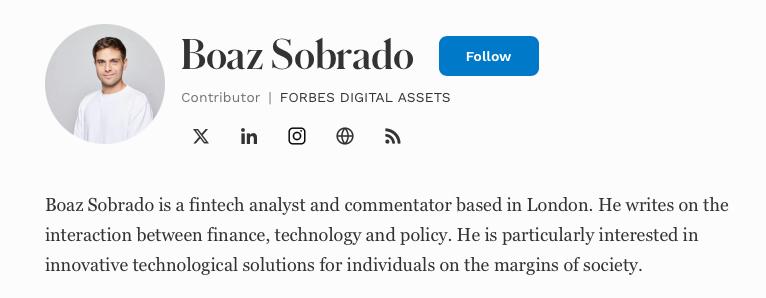What Bernie Sanders And Donald Trump Get Wrong About Credit Cards

In Hammurabi’s ancient Babylon, rulers were already worried about capping interest rates to protect borrowers from exploitation. Nearly 4,000 years later, we’re still debating the same questions about consumer credit—particularly when it comes to lending to underserved populations.
Both Donald Trump and Bernie Sanders have recently proposed capping credit card interest rates at 10%: a rare moment of agreement between political opposites. While the intention to protect consumers is admirable, such proposals risk misdiagnosing the real problem.
Understanding The True Cost of Credit Cards
Traditional consumer credit relies heavily on a problematic model that takes advantage of the unintuitive nature of compounding credit. Credit card companies, for instance, generate significant profits from a small group of customers known as “revolvers”: those who carry balances month to month, accumulating compound interest while occasionally incurring late fees. What starts as a small balance can multiply several times through this combination of penalties and compound interest.
This creates a stark transfer of wealth in the American financial system. Those who carry credit card balances (often lower-income households) effectively subsidize the generous rewards enjoyed by more affluent cardholders. A Federal Reserve study quantified this redistribution: credit card rewards transfer approximately $15 billion annually from the poor and less educated to the wealthy and educated. While one group pays high compound interest and late fees, another collects airline miles, cashback rewards, and premium perks. Credit card companies position themselves in the middle, profiting from both interchange fees from merchants and interest payments from revolvers.
Why APR Calculations Can Be Misleading
Annual Percentage Rate (APR) calculations become particularly distorted for small, short-term loans. The formula assumes that interest compounds over a full year, but most small loans are repaid within weeks or months. For instance, UK data shows the [average payday loan duration](https://boazsobrado.com/blog/2023/09/23/the-numbers-behind-small-loans// “https://boazsobrado.com/blog/2023/09/23/the-numbers-behind-small-loans/") is just 22 days. When stretched to an annual basis, even modest fees can appear astronomical - a $30 fee on a $200 loan for one month mathematically translates to several hundred percent APR, even though the customer only ever pays $30.
This mathematical quirk explains why even responsible lenders focused on small consumer loans show seemingly high APRs. The issue becomes more acute when considering fixed costs. Both a $100 loan and a $10,000 loan might require the same $10 in administrative costs, but when expressed as an APR, that $10 appears as a much higher percentage rate on the smaller loan.
The core issue isn’t necessarily the interest rate itself, but rather the combination of compound interest and penalties. A fixed multiple with a clear maximum repayment amount provides more protection than a lower APR that can compound indefinitely. This becomes particularly important given that most consumers struggle to understand compound interest calculations, while they can easily grasp a simple multiple like “you’ll never pay more than 1.5 times what you borrowed.”
Consumer Protection Beyond APR
PayJoy, a fintech company that has originated over $2 billion in loans across eight emerging markets using digital collateral, charges what might seem like high rates: they achieve a 40% return on each dollar lent. But looking deeper reveals why such pricing might actually be more ethical than seemingly cheaper alternatives.
Consider PayJoy’s lending model. They use a simple “1.5x” multiple where a customer will never pay more than 50% above the original loan amount, regardless of how long it takes to repay. Compare this to a credit card charging 10% APR that allows compound interest and late fees. A $1,000 balance can still balloon to several times that amount if a customer falls behind.
“APR is not always the most relevant metric for short-duration loans,” explains PayJoy’s CEO Doug Ricket. This insight has led to a new model of consumer lending emerging in developing markets, with principles including:
- No compound interest
- No late fees
- A hard cap on total repayment (never more than double the original loan)
- Simple, fixed total costs shown upfront
Research shows that consumers, particularly those new to formal credit, struggle with compound interest concepts. They strongly prefer fixed total costs—even at seemingly higher rates. As JD Vance notes in “Hillbilly Elegy,” many borrowers lack the financial sophistication to shop around for better rates, or face urgent needs that preclude comparison shopping.
The Competition Paradox
This explains why PayJoy’s model, though appearing expensive in APR terms, might better serve consumers. By eliminating compound interest and late fees, they force both lender and borrower to be realistic about costs upfront and avoid unpleasant surprises. Their reported 79% customer satisfaction rate and strong repayment performance suggest this transparency works.
The success of this approach challenges conventional wisdom about consumer credit pricing. Rather than focusing solely on APR, we might better evaluate credit products by:
- Maximum possible cost to borrower
- Transparency of total costs
- Absence of compound interest and fees
- Real-world repayment patterns
As financial inclusion expands globally, companies like PayJoy demonstrate that apparently higher upfront costs might be preferable to the uncertainty and potential pitfalls of traditional credit regardless of APR. Sometimes, the most expensive loan on paper might be the cheapest in practice.
The ancient Babylonians understood that credit needs rules to protect borrowers. Today’s innovation isn’t just in the technology that enables lending. It’s in rethinking how we structure credit to serve vulnerable borrowers better.